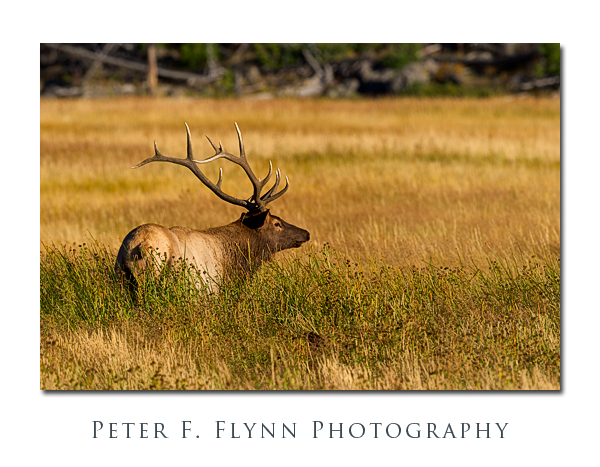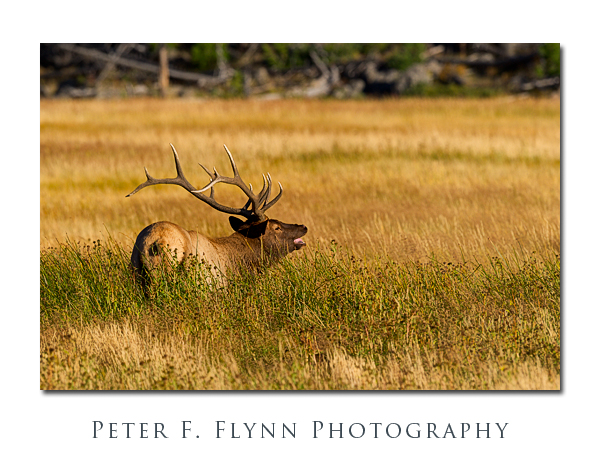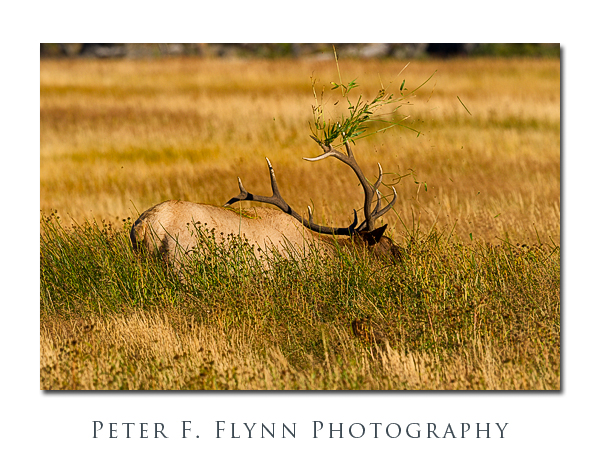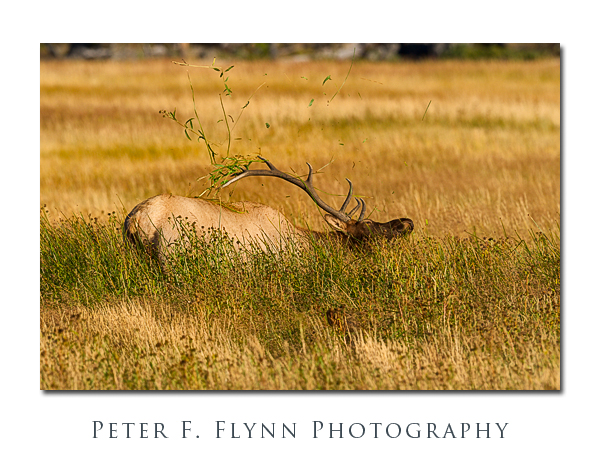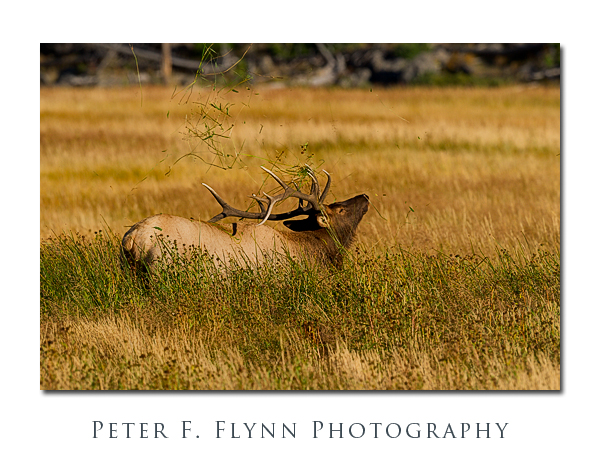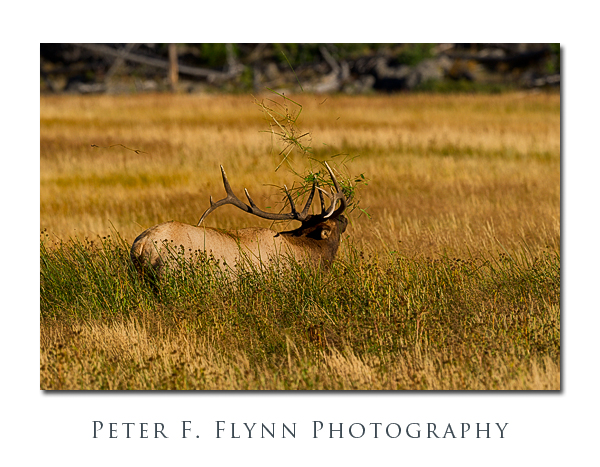Each fall, hundreds of photographers swarm Yellowstone National Park in an effort to make images of bull Elk. By mid-September the rut is in full swing, and this amazing event can best be viewed from Mammoth Hot Springs near the northern entrance of the park, the Lamar Valley in the north central section of the park, and at Madison Junction near the west entrance.
I am naming the behavior documented in this entry as ‘scything’. This a common rut-antic in which the bull slashes antlers rapidly back and forth through rough greenery, launching bits and pieces of cut grass through the air. One must guess that this is instinctive behavior designed to sharpen the edges of the rack. Regardless, many blades of tall grass are sacrificed in the effort.
The flats adjacent to the Madison River near the Junction provide a startlingly beautiful location from which to observe the rut. The West Entrance Road runs very close to the Madison River here, and there are many pull-outs along the roadway that provide excellent vantage points. The bulk of the activity occurs between Madison Junction and Seven Mile Bridge, which is the first bridge over the Madison River along the road heading westward from Madison Junction. This is only about a six mile stretch, yet during the rut, as many as half a dozen bulls can be competing here.
Elk are crepuscular beasties, so naturally the best opportunities to observe them will be in the early morning and late afternoon. I prefer to visit them in the afternoon and early evening, at that time the setting sun produces a most pleasing warm light. The tall grass that lines the floor of the Madison Valley glows intensely at this time, which can produce precisely the sort of contrast one is hoping for in wildlife photography.
The pull-outs provide generally very nice spots from which to shoot, however the road runs close to the southern edge of the wall of Madison Canyon, which means that the shooting-angle can run uncomfortably close to the sun. In addition, the Elk often congregate near the Madison River, which likewise tends to place animals between the photographer and the sun. In spite of these challenges, unparalleled opportunities for image-making exist here.
Images in this entry were recorded at around 18:00 MDT on September 20, 2011, using the Nikon D3s and the AF-S NIKKOR 600mm f/4G ED VR lens. Exposure was in the range of f/5.6 to f/8.0 at shutter speeds from 1/2000s to 1/1000s, ISO 800. Images were processed in ACR 6.4.1, with additional work conducted in Nik Viveza 2 and Nik Color Efex Pro3.
Madison Junction derives its name from the confluence of the Gibbon River and the Firehole Rivers, which meet here to form the Madison River. Although the Madison here is a modest stream, it flows westward and northward to meet the Jefferson River at Three Forks, MT, to form the Missouri River.
Historically, Madison Junction is the location at which, in 1870, members of the Washburn-Langford-Doane Expedition met to hatch the notion that the area was too important to be owned by private individuals. A small placard at the Madison Junction Information Station commemorates this key event in National Park history.
Copyright 2011 Peter F. Flynn. No usage permitted without prior written consent. All rights reserved.
